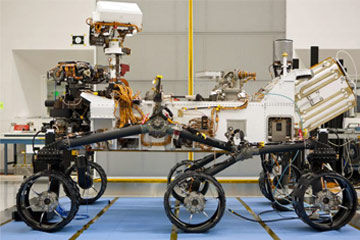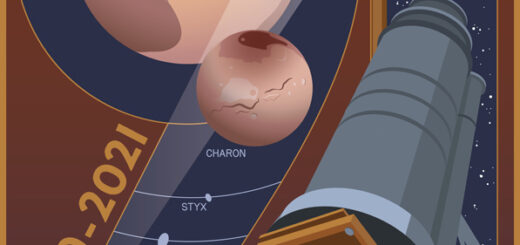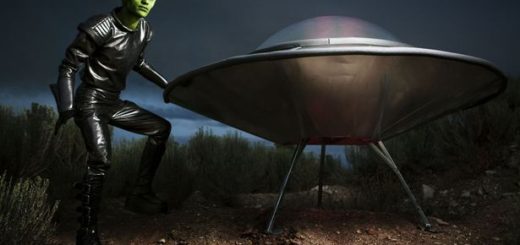How the Mars Curiosity Rover Works

Move over, Spirit and Opportunity: There’s a new Mars rover on the planet as of August 2012. With its six-wheel drive, rocker-bogie suspension system and mast-mounted cameras, it might resemble its venerable predecessors, but only in the way a pickup truck resembles a Humvee. We’re talking about a nuclear-powered, laser-toting monster truck of science, complete with rocket pack — a steal at $2.5 billion (tax, title, docking and freight fees included).
The Mars Science Laboratory, aka Curiosity, dominates the Mars rover showroom, stretching twice as long (about 10 feet, or 3 meters) and built five times as heavy (1,982 pounds, or 899 kilograms) as NASA’s record-setting 2003 models, Spirit and Opportunity. It comes off-off-road ready, with no hubs to lock (and no one to lock them). Six 20-inch (51-centimeter) aluminum wheels tear over obstacles approaching 30 inches (75 centimeters) high and rack up 660 feet (200 meters) per day on Martian terrain.
Ladies and gentlemen, the 2011 Curiosity packs more gadgets than a Ronco warehouse — everything from gear for collecting soil and powdered samples of rock, to sieves for prepping and sorting them, to onboard instruments for analyzing them. Curiosity’s laser is a tunable spectrometer designed to identify organic (carbon-containing) compounds and determine the isotope ratios of key elements. Best of all, its tried-and-true nuclear power system, long used in satellites, spacecraft and lunar equipment flown aboard the Apollo missions, is guaranteed not to leave you stranded in a dust storm.
Yes indeed, NASA went back to the drawing board for this one, dreaming up a fractal-like arrangement to pack the finest selection of compact scientific accoutrements into the smallest space possible. But don’t take our word for it: Ask Rob Manning, flight system chief engineer at Jet Propulsion Laboratory, who calls it “by far, the most complex thing we’ve ever built” [source: JPL].
No effort was spared for NASA’s most ambitious rover to date. This workhorse will conduct more onboard scientific research, using a larger suite of laboratory instruments and sensors, than any previous Martian model. Order today, and NASA will deliver it to within 12 miles (20 kilometers) of your door (some limitations apply; door must be within 250-million-mile (402-million-kilometer) delivery area). Your rover will land with more precision and cover more rugged ground than any other, and it will have the best chance so far of capturing the history of water flow and the possibility of ancient habitable environments on Mars. Yes, if Motor Trend magazine had a category for space buggies, Curiosity would no doubt garner Rover of the Year.
Now, why don’t you let us hold onto your keys while you take it for a test drive?



 Creators of mankind
Creators of mankind Description of “Tall white aliens”
Description of “Tall white aliens” Where they came from?
Where they came from? About hostile civilizations
About hostile civilizations The war for the Earth
The war for the Earth “Tall white aliens” about eternal life
“Tall white aliens” about eternal life Video: “Nordic aliens”
Video: “Nordic aliens” Aliens
Aliens Alien encounters
Alien encounters The aliens base
The aliens base UFO
UFO Technology UFO
Technology UFO Underground civilization
Underground civilization Ancient alien artifacts
Ancient alien artifacts Military and UFO
Military and UFO Mysteries and hypotheses
Mysteries and hypotheses Scientific facts
Scientific facts


















